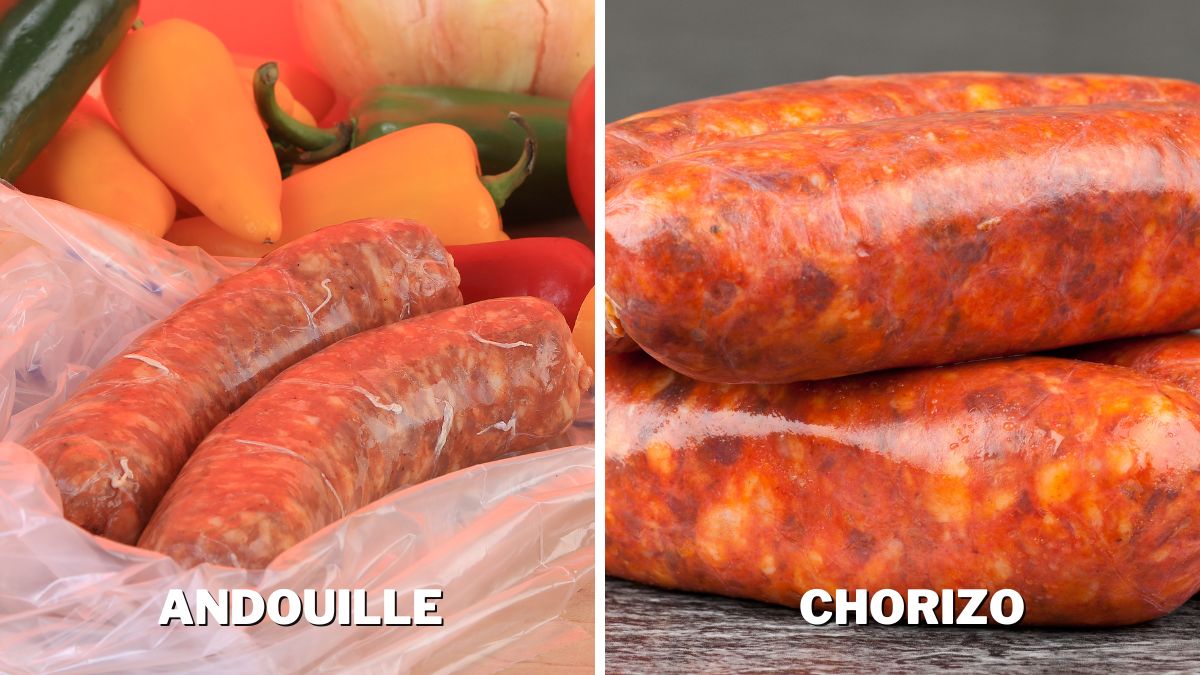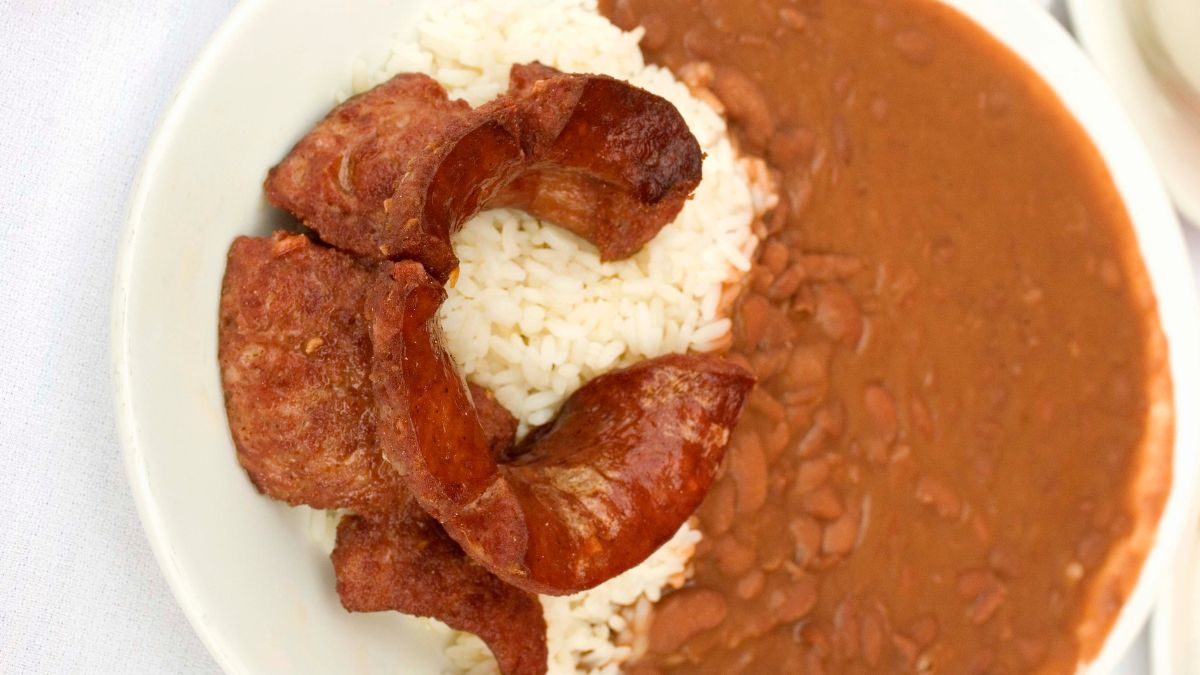Andouille vs. Chorizo: Differences & More

As you’ve probably noticed, I am a huge sausage fan, and I take the differences between sausages very seriously. Sausages are a very particular meat group that offers both taste and a glimpse of the culture that comes from. For this article, I selected two very popular sausages to compare. So, what are the differences between andouille and chorizo?
Andouille is a smoked sausage made from pork, seasoned with spices like garlic, onion, and thyme, while chorizo is a highly spicy sausage made from pork or other meats. Andouille has a spicy taste with a smoky note, and flavor much milder than chorizo’s.
Even though some of their uses overlap and no law prohibits you from using one instead of the other, andouille and chorizo shine best when properly used. Since they are traditional sausages from their respective cuisines, I decided to give each of the times under the spotlight. I will describe the differences and similarities between andouille and chorizo sausages in this article.
Ingredients
The delicious andouille sausage is a smoked sausage that originated in France but is commonly associated with Creole and Cajun cuisine. I love it because of its smoky richness and the way it combines with almost everything, or maybe that’s just me.
It is usually made from pork, seasoned with a blend of spices, such as garlic, onion, black pepper, thyme, and sometimes cayenne pepper. This rustic and bold sausage is full of flavor and aroma, but it balances the flavors perfectly, creating a unique and recognizable taste.
Since it is a sausage by the people for the people, it has variations made with wine or smoked paprika or even both. I like the classic kind best, but the variations hold up just as well.
On the other hand, chorizo is a vibrant and lively sausage originating from Latin cuisine, more precisely, Spain. The cultural migration brought it to Mexico, and it is now the star of many dishes.
Today, chorizo is a part of the Spanish, Mexican, and Latin American cuisines. The Chorizo sausage is heavily seasoned and very spicy. It can be made from pork or other meats such as beef or chicken.
There are even vegetarian chorizo alternatives, but the original recipe calls for meat. Chorizo combines spices, paprika, garlic, chili powder, oregano, and cumin, giving it an overall bold flavor, and it is not for everyone. It takes a trained palate to appreciate this pearl from Spanish-Latin-American cuisine.
Appearance & Taste

Andouille is usually larger than chorizo as well as coarser. You can literally feel whole chunks of meat when you bite into it. It is a smoked sausage, and it, naturally, has a smoky flavor, although you can sometimes find a version that isn’t smoked.
It has a pronounced savory taste with a mild spiciness and a subtle heat from the spices used in its seasoning. Still, it isn’t as spicy as chorizo.
On the other hand, chorizo comes in two different forms, i.e., fresh (raw) and cured (dry or smoked). While the non-smoked variation is not the original, chorizo is equally chorizo in both forms.
Fresh Chorizo is, expectedly, softer in texture, while the cured one has a firmer consistency. Both versions have a rich and spicy flavor profile that balances the smokiness, spiciness, and tanginess perfectly.
Cooking Method & Serving Style

Andouille sausage is often used in Louisiana-style dishes such as gumbo, jambalaya, and red beans and rice. It gives the dish some of its smoky and meaty magic, making it all the more irresistible. It also has one hidden power, which is adding some of its delicious fattiness when cooked.
It’s usually sliced or diced and added to stews, soups, or as an ingredient in various dishes to infuse them with its smoky and spicy flavors. Andouille sausage can be grilled, pan-fried, or simmered. My favorite way to make it is with fried eggs, but I also use it as a pizza topping and make mean sandwiches by grilling it.
In addition to being used in traditional dishes like paella, tacos, and enchiladas, you can use chorizo grilled, fried, or baked and add it wherever you want. I like it on my pizza, in my sandwiches, in pasta, or on a charcuterie board.
My first chorizo dish was chorizo con huevos, and it’s hands down the most delicious chorizo dish I have ever tried! Here’s more about it.
Substitutes
From my personal standpoint, these two are irreplaceable in their signature dishes, and nothing you substitute them with will deliver the same result as these two sausages. Still, objectively speaking, there are substitutes for both sausages that do an excellent job if you aren’t as passionate about sausage as I am.
You can substitute andouille for a smoked or spicy sausage with a coarse texture. Kielbasa, smoked sausage, or even hot Italian sausage can be used as great alternatives.
A spicy Italian sausage can do the job if you are looking for a chorizo substitute. Still, it’s harder to substitute because of its very particular flavor combination, so no substitute will deliver the same flavor.
How often do you use sausages in your cooking, and which dishes do you usually make? I can’t wait to read all about it in the comments below!
